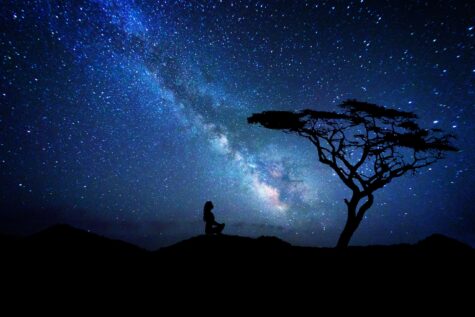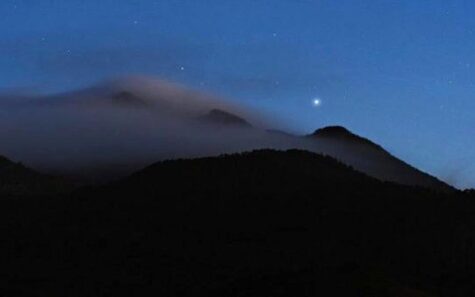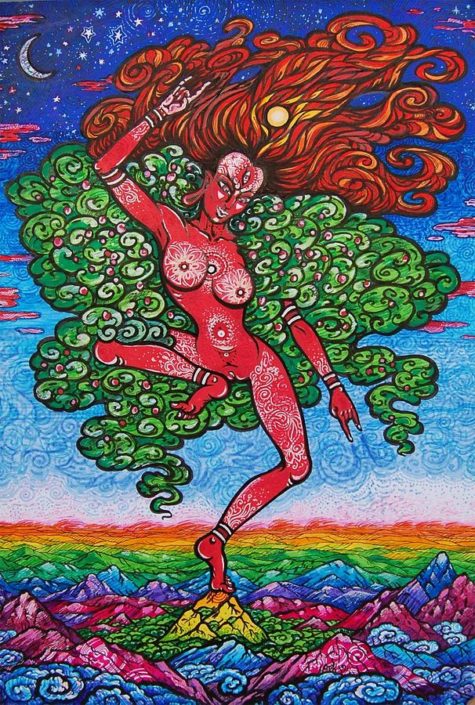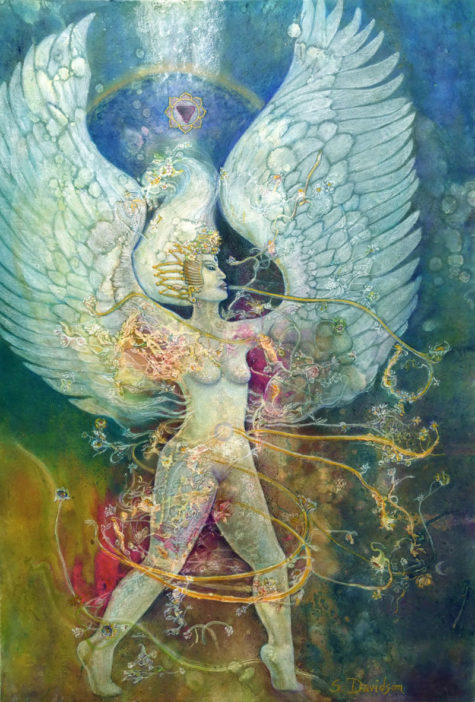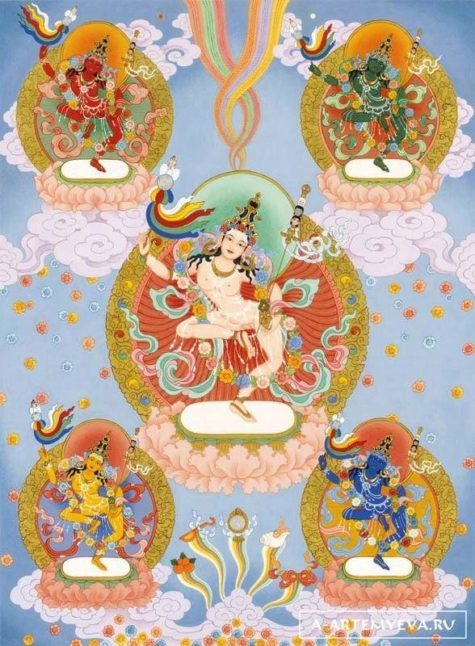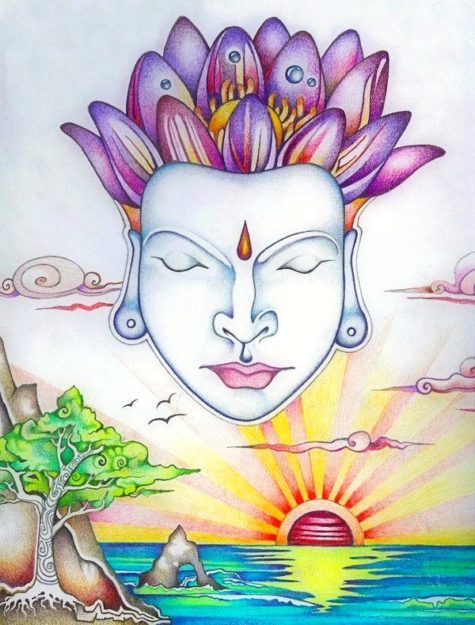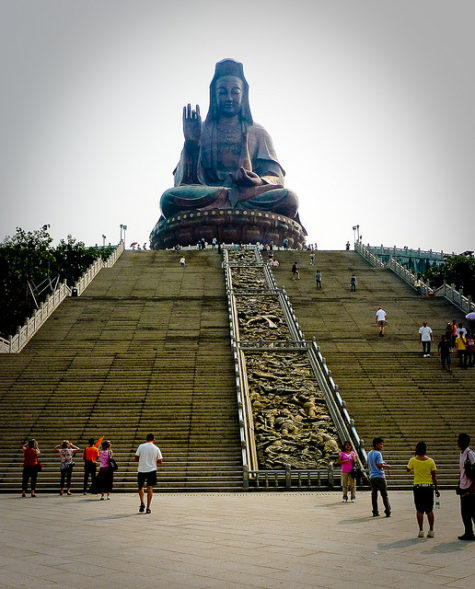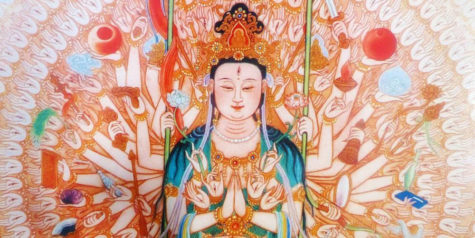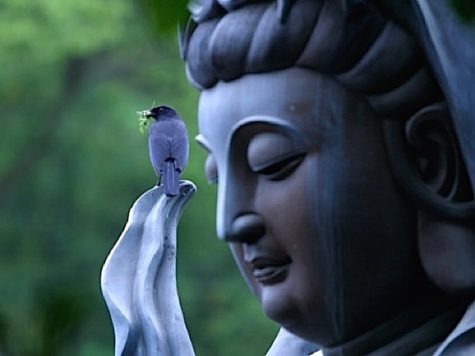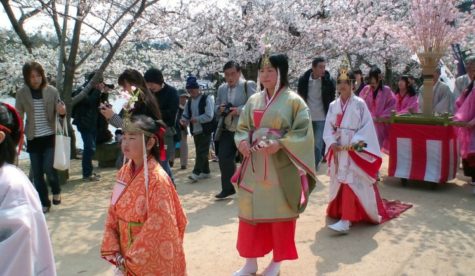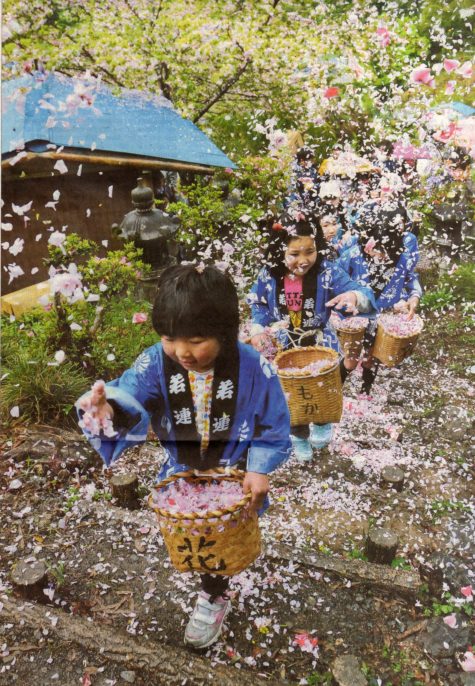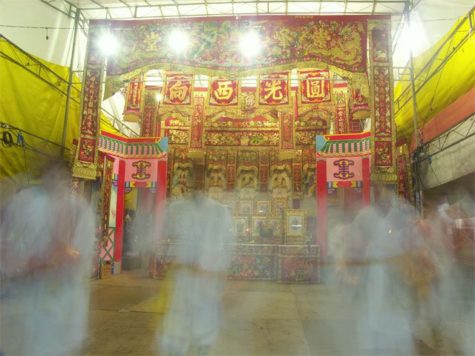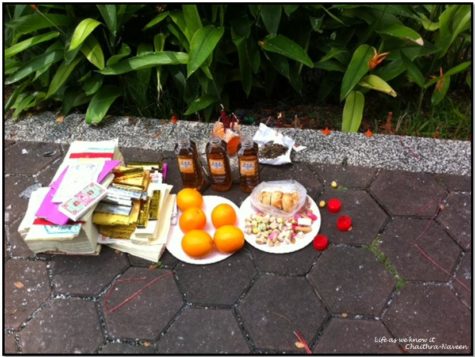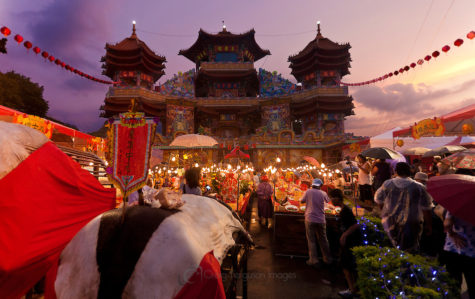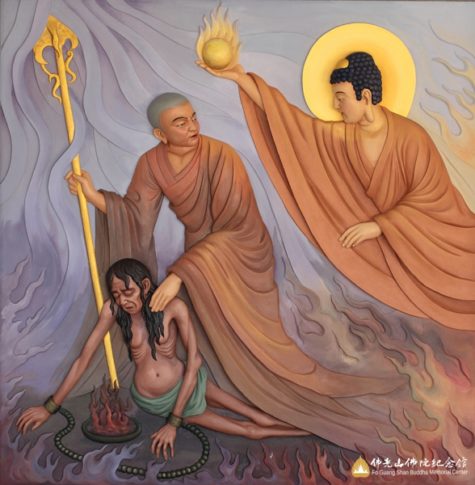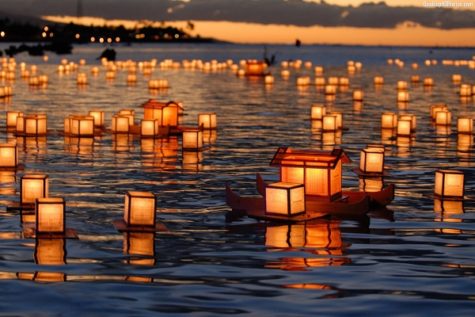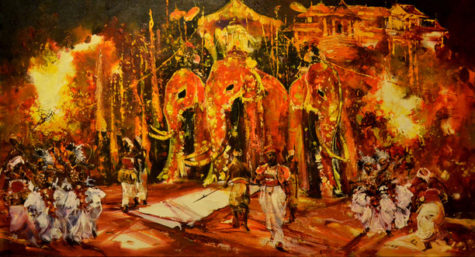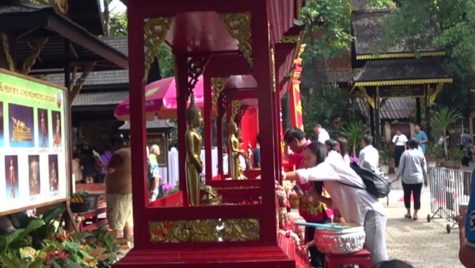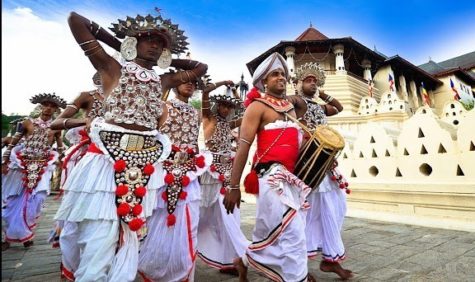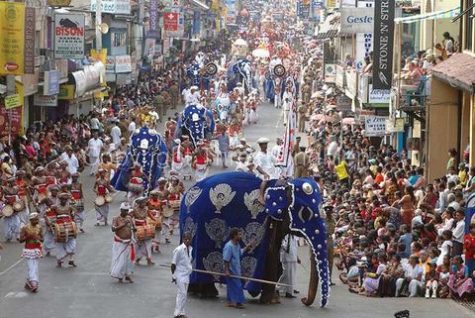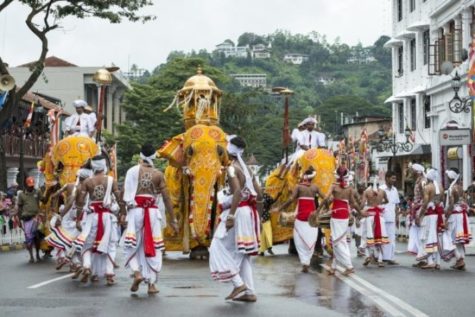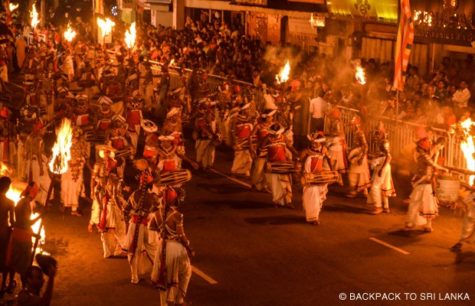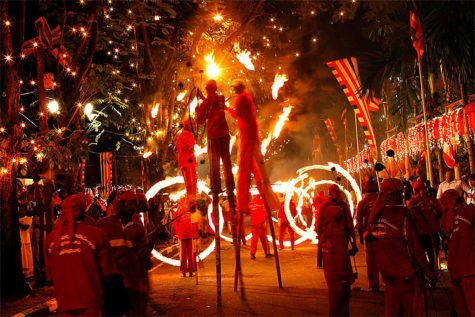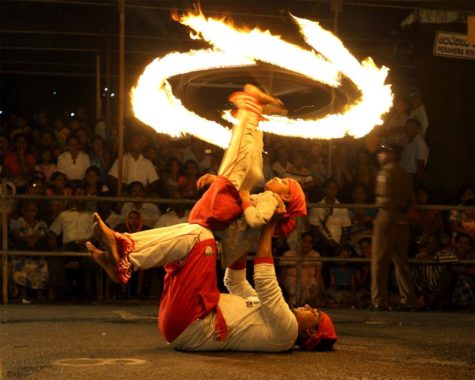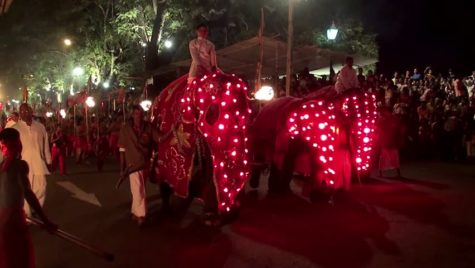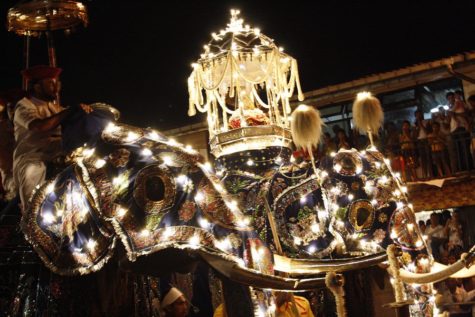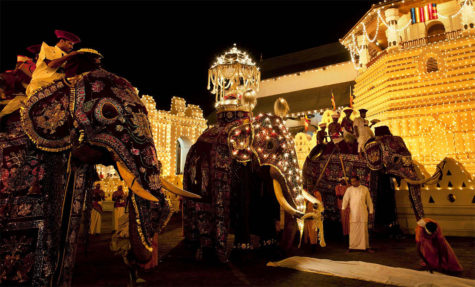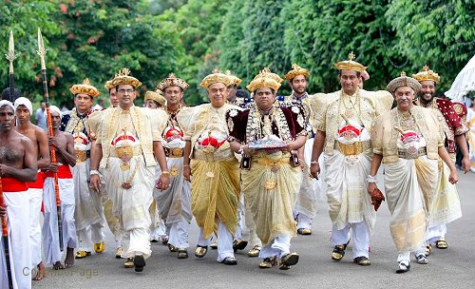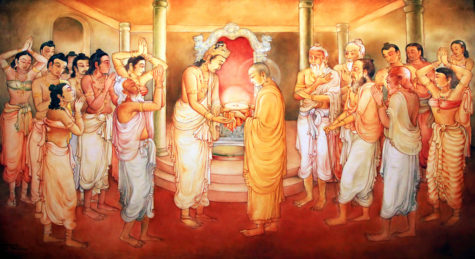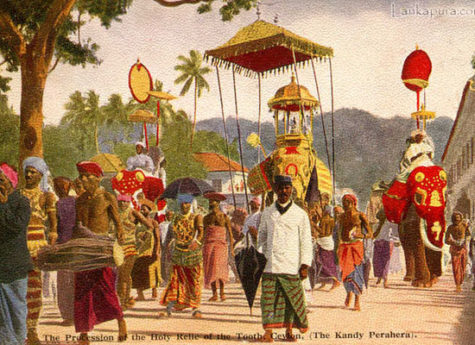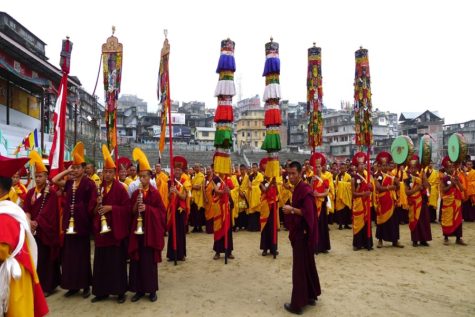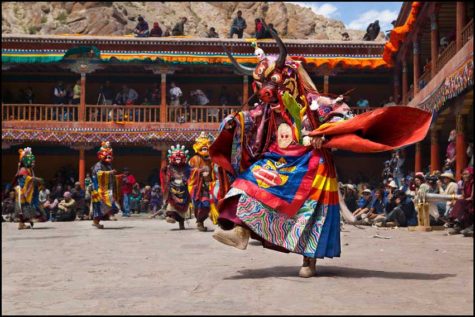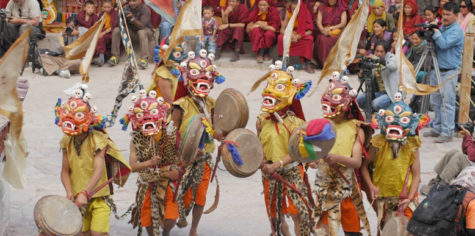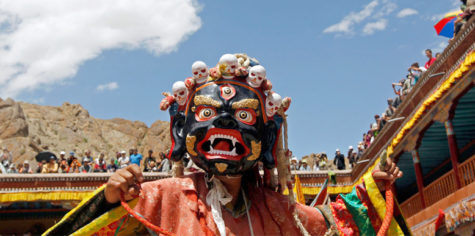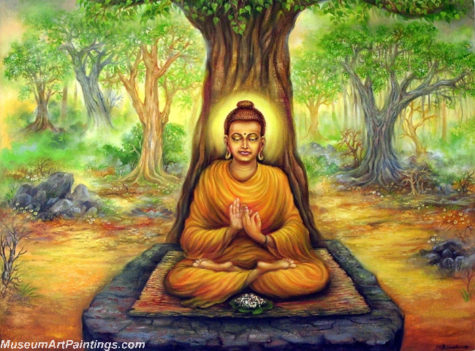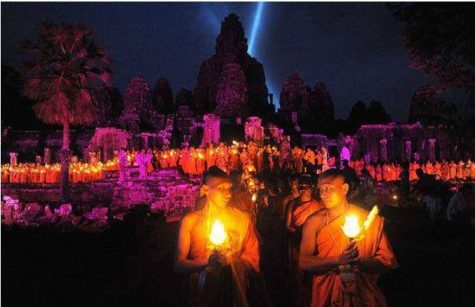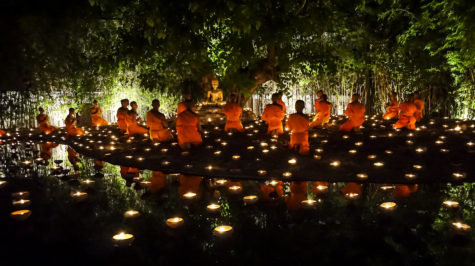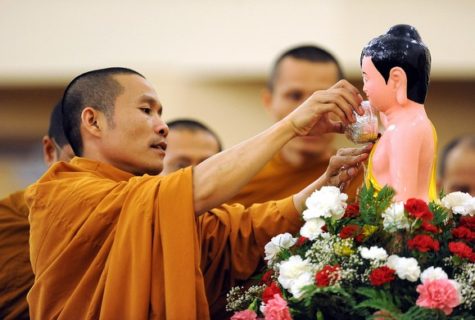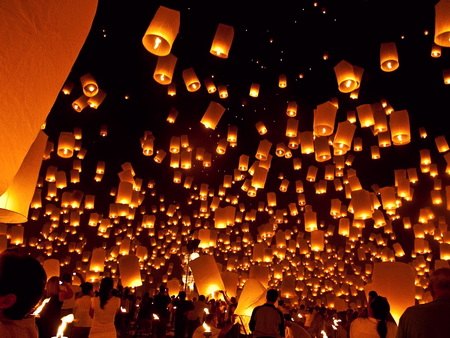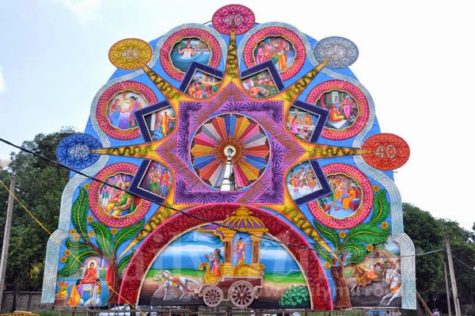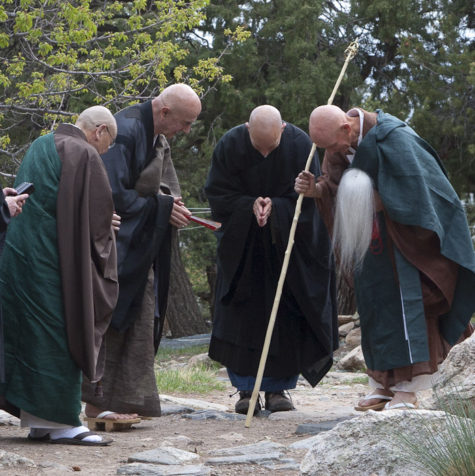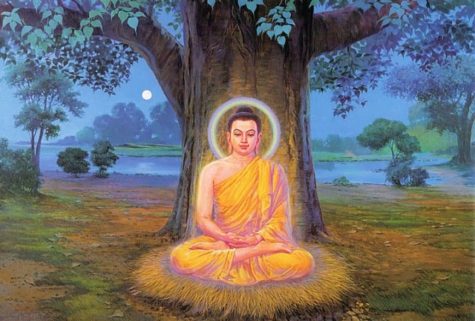Buddhism
According to Tibetan and Vedic astrology, there are a cluster of stars, called the ‘Rishi’ stars, that ‘appear’ for one week each year – usually during the 8th lunar month (September). According to Tibetan astrology, the Rishi stars will be ‘out’ this year from Sept. 9-15. In Tibetan this is known as ‘Karma Rishi.’
According to Hindu legend, these stars were once great sages of the past, who, upon their death, ascended up into the heavens and became these stars. When they are visible in the night sky, their light is said to possess special healing powers that transform all water into a healing nectar.
Some sources state these stars are the Ursa Major, or the ‘big dipper,’ also known as the Sapta Rishi stars, who are associated with the seven great Rishis of Vedic lore. Other sources say this is the Canopus star, which is associated with the Rishi Agastya, and is said to be the ‘cleanser of waters.’
Typically, Tibetan doctors and healers would place buckets of water outside during this time, then use this water for making their medicines. Lama Dawa remembers how His Holiness Matrul Rinpcoche – a great Tibetan physician – would then boil this water down, thus concentrating it, then use this water to make the herbal medicinal pills, and also to consecrate the water with healing mantras.
Another way of benefiting from this healing water is to bathe in pools, ponds or rivers during this time. Or, collect water in buckets and use that for bathing. Any water – whether it is ocean, river, stream, or water in pools, is imbued with the healing qualities of the stars.
This water can be used to make healing tinctures, or for giving to pets and plants. Even the water in our own bodies can be ‘blessed’ and purified by this special healing energy by exposing your body to the night sky when the stars are out.
It is a particularly auspicious time to do practices such as the Vajra Armor mantra, which is used to consecrate water, or Medicine Buddha mantras and offering pujas.
Prayer:
Rangrig Dorje Rinpoche offers this prayer and mantra to be said while taking a bath outside under these stars:
༈ཇི་ལྟར་བལྟམས་པ་ཙམ་གྱིས་ནི། ལྷ་རྣམས་ཀྱིས་ནི་ཁྲུས་གསོལ་ལྟར།
JI-TAR TAM-PA TSAM-GYI NI / LHA-NAM KYI-NI TRU-SOL TAR /
ལྷ་ཡི་ཆུ་ནི་དག་པ་ཡིས། དེ་བཞིན་བདག་གིས་ཁྲུས་བགྱིའོ།
LHA-YI CHU-NI DAG-PA YI / DE-ZHIN DAG-GI TRU-GYI O /
- Mantra:
ཨོཾ་སརྦ་ཏ་ཐཱ་ག་ཏ་ཨ་བྷི་ཥེ་ཀ་ཏ་ས་མ་ཡ་ཤྲཱི་ཡེ་ཧཱུྃ༔
OM SARWA TAT’HAGATA ABHISHEKA TA SAMAYA SHRI YE HUNG
- Aspiration:
འདི་ནི་ཁྲུས་མཆོག་དཔལ་དང་ལྡན། ཐུགས་རྗེའི་ཆུ་ནི་བླ་ན་མེད།
DI-NI TRU-CHOG PAL-DANG DEN / T’HUG-JE’I CHU-NI LA-NA MED /
བྱིན་རླབས་ཡེ་ཤེས་ཆུ་ཡིས་ནི། ཅི་འདོད་དངོས་གྲུབ་སྩོལ་བར་མཛོད།
JIN-LAB YE-SHE CHU-YI NI / CHI-DOD NGO-DRUB TSAL-WAR DZOD
Western Astrology:
Western astrologer, Terry Nazon, offered this information about the Sapta Rishi Stars:
“They are the fixed stars of Ursa Major the Big Dipper. They are always visible…but during that time in September as the constellation late Leo and early Virgo is right above us in the night sky…they are closest then and right above us.
Because the earth is moving and just like the moon moves across the night sky so will the big dipper…it can also be that the Sun is activating them…for planets and stars to be effective they have to be triggered by a planet or star like the sun.
If you are “charging” water you will want to place the water where it receives the most exposure. For instance maybe there’s tree blocking the Big Dipper in your front yard…and remember, we are made up of 60 % water and in ancient Kabbalah, the text said to bath ourselves in this planetary “rain” they called it.”
The Rishi stars:
- 1. Dubhe The Bear:
Astrology, arrogance, psychic power, destruction; aka Krathu, one of the 7 Rishis (Hindu sages) in Ursa Major; Bast Isis, the Egyptian goddess; “The Eye”; “Heaven’s Pivot”
- 2. Merak:
Prudent, restrained, mistrustful, self-controlled (but angry when roused), love of command, power to achieve, good with animals; Pulaha, one of the 7 Rishis (Hindu sages) of Ursa Major
- 3. Phecda:
Civilising influence, tamer of beasts, transmission of divine knowledge; Pulasthya, one of the 7 Rishis (Hindu sages) of the Great Bear, Ursa Major; bloodbaths, assassinations, riots, sexual perversion
- 4. Tania Borealis:
In the right hind paw of Ursa Major, along with Tania Australis, this star was part of an early Arabian constellation, The Gazelle, of which this group is the “Second Leap”. The Great Bear is mainly martial in action, considered unfortunate for nations and kings.
- 5. Megrez:
Spiritual sight; creativity; violence; Atri, one of the 7 Rishis (Hindu sages), the ruling star of the Great Bear, Ursa Major
- 6. Alioth, The Black Horse:
Suicide among women; danger in pregnancy; Angirasa, one of the 7 Rishis (Hindu sages) in Ursa Major
- 7. Mizar:
Connected with fires of a catastrophic extent and mass calamities; Vasishta, one of the 7 Rishis (Hindu sages) of Ursa Major
- 8. Alula Borealis:
Hindmost foot of Ursa Major. As the northern Alula, it is more fortunate. Associated with female infidelity & revenge. The Great Bear gives a quiet, prudent, suspicious, mistrustful, self-controlled, patient nature, but an uneasy spirit; great anger when roused.
The Canopus Star:
The Canopus star is the second brightest star after Sirius. In Indian Vedic literature, the star Canopus, known as the ‘smiling star’ is associated with the sage Agastya, one of the ancient rishis (the others are associated with the stars of the Big Dipper). Agastya, the star, is said to be the ‘cleanser of waters’ and its rising coincides with the calming of the waters of the Indian Ocean.
Canopus is a bright star most easily visible in the Southern Hemisphere. It is in the constellation Carina, the keel. The star is of a fairly rare type, considered a class F giant on the main sequence of stars. This means it has a mass close to that of the sun.
Because the star’s spectral class is not well studied, it is difficult to establish how far away Canopus is. Parallax measurements with the Hipparcos satellite have established it to be about 313 light-years away.
Canopus can’t be seen from most locations in Europe and North America. Observers in northern latitudes south of 37°N can find the star below Sirius in the southern sky on winter evenings. Canopus is at its highest in February around 9 pm. It is located about 36 degrees to the south of Sirius.
In science fiction, Canopus is perhaps best known for being the parent star for Arrakis, a dusty desert planet in the “Dune” universe.
Canopus is used in space navigation to adjust the position of spacecraft in space. Many spacecraft are equipped with a special camera called the Canopus Star Tracker.
Sources:
Dakini day, celebrated on the 25th day of each lunar month in Vajrayana Buddhist traditions, celebrates the feminine energy of wisdom. Devoted Buddhists will celebrate with a Tsok (Tsog), a feast including food, singing, a group (or single) sadhana full of sound and celebration. Most Tibetan Buddhist temples and meditation centers try to arrange a monthly Tsog on this day each month, with celebrants bringing food as offerings. It is always a happy day, that invites blessings not only for the attendees, but for all sentient beings.
This is one of the special days during a month, when Vajrayana practitioners perform a ritual of offering and purification of their commitments. It is believed that on this particular day, all the Dakinis gather in special sacred places and their energy is potently vivid and present at that moment.
When we perform practice on those auspicious days, we can connect with this potent energy and thus gain a lot of merit. It allows us to develop our practice and capacities, as well as purify our defilements and mistakes that we have accumulated with time. In this way, Dakini Day becomes very important for Vajrayana practitioners.
What is a Dakini?
The Dakini is a female being of generally volatile temperament, who acts as a muse for spiritual practice. Dakinis can be likened to elves, angels, or other such supernatural beings, and are symbolically representative of testing one’s awareness and adherence to Buddhist tantric sadhana.
Dakinis are portrayed as elusive, playful and often fierce and naked to symbolically convey how elusive true Wisdom encompassing “Emptiness” can be.
Without contradiction to their role as exemplars of Emptiness, Dakinis can also represent fierce activities, such as protection — the ferocious protective love of a mother.
Khandro Rinpoche defines the authentic Dakini principle as “a very sharp, brilliant wisdom mind that is uncompromising, honest, with a little bit of wrath.”
Dakinis appear in many forms. “The Dakinis are the most important elements of the enlightened feminine in Tibetan Buddhism,” says American teacher Tsultrim Allione. “They are the luminous, subtle, spiritual energy, the key, the gatekeeper, the guardian of the unconditioned state. If we are not willing to invite the Dakini into our life, then we cannot enter these subtle states of mind. Sometimes the Dakinis appear as messengers, sometimes as guides, and sometimes as protectors.”
Dakini are timeless, inorganic, immortal, non-human beings who have co-existed since the very beginning with the Spiritual Energy. In some New Age belief systems, they are angelic. This New Age paradigm differs from that of the Judeo-Christian by not insisting on angels being bona fide servants of God.
Moreover, an angel is the Western equivalent of a Dakini. The behavior of Dakini has always been revelatory and mysterious; they respond to the state of spiritual energy within individuals. Love is their usual domain – one explanation for Dakini or angels supposedly living in the sky or heaven. Manifestations of Dakini in human form occur because they supposedly can assume any form. Most often they appear as a human female. By convention, a male of this type is called a ‘Daka’.
In Buddhism, typically, the male Buddhas represent compassionate means, while the female Buddhas represent Wisdom. The symbols of bell and vajra (Ghanta and Dorje) represent female wisdom — the bell, which makes the sound of “Emptiness” — and the Vajra, representing compassionate means.
Dakini’s have always been a part of Buddhism, starting with the Jataka’s (stories of Buddha’s former lives) in which “divine beings are described as travelling through the air. In Sanskrit, such a being is called a Dakini, a term generally translated as “space-goer,” “celestial woman,” or “cloud fairy.”
Dakinis are typically thought of as the emanation of the “Enlightened Mind” understanding Emptiness. Another concept usually tied to Dakini practice is “bliss” — the state of blissful awareness of emptiness.
It is a wonderful experience to have a moment that realizes emptiness, a feeling of joy-bliss rather than “nothingness.” This is why Dakinis are often portrayed as active, dancing, joyful or fierce, naked and unencumbered.
Five Dakini Healing Mantra
The meaning of Dakini is the female enlightened energy and the awakened state of consciousness. Therefore, chanting this mantra increases and enhances all enlightened feminine energy.
Bam Ha Ri Ni Sa
The 5 Dakini also represents each of the 5 Elements:
- BAM ~ Buddha Dakini ~ (blue) ~ Mind energy, pacifies Ignorance
- HA ~ Vajra Dakini ~ (white) ~ Body energy, pacifies Anger
- RI ~ Ratna Dakini ~ (yellow) ~ Knowledge/Qualities/Healing, pacifies Ego/Pride
- NI ~ Padma Dakini ~ (red) ~ Speech energy, pacifies Desire
- SA ~ Karma Dakini ~ (green) ~ Action/Removes Obstacles, pacifies Jealousy
This mantra is helpful for all female related health issues, transforms negative emotions, unblocks channels, and balance 5 elements. When chanting this mantra on Dakini Day, the power magnifies ten-fold!
After chanting, blow into a glass of water, which infuses the healing vibration into the water, drink, and continue to enjoy its healing properties.
Sources:
Quan Yin’s Birthday is commonly celebrated on the 19th day of the 2nd lunar month. In 2018 this falls on April 4, but in 2021 it lands on March 26, so you can see the dates vary widely from year to year. The birthday of the Goddess of Mercy is a celebration of the Bodhisattva (“Buddha-to-be”) of infinite compassion and mercy.
Alternate spellings include:
- Kwan Yin
- Kuanyin
- Kuan Yin
- Guanyin
One of the deities most frequently seen on altars in China’s temples is Quan Yin. Quan Yin, the Buddhist Heart of Mercy and Queen of Compassion, is no forgotten deity but among the most popular on Earth today. The most beloved of Buddhist deities, he or she is accepted not only by Buddhists but also by Japanese, Chinese, and Koreans.
On her birthday, young men and women come together and burn joss sticks and worship the goddess either in temple halls or court areas. Some devotees also offer oil for the lamp of Guan Yin. This is an offering meant for peace and health.
Common dishes served on this day include porridge, fried koey teow and noodles, which stays true to authentic Chinese cuisine. All dishes served at the festivities are typically vegetarian as well.
Quan Yin is the Bodhisattva of Compassion. In Sanskrit, her name is Padma-pâni, or “Born of the Lotus.” Quan Yin, alone among Buddhist gods, is loved rather than feared, and is the model of Chinese beauty.
She is a tireless, ever-vigilant protective guardian. Although her appearance is milder than that of a warrior spirit, she is no less powerful. Kwan Yin achieved nirvana but refused to leave Earth as long as any person still suffers. Kwan Yin vows that if you call her name in times of anguish, she will come and assist you.
There are three different dates celebrated as her birthdays; when she was born, when she achieved enlightenment and when she became a nun.
Guan Yin is known as Bodhisattva of the infinite concern in East Asian Buddhism. It is believed that Guan Yin can take different forms to help others. Therefore, she can be represented by either having a female or male body.
Goddess of Mercy was first described in the Lotus Sutra in the 5th century by Gautama Buddha. She was originally born a xian (holy spirit) reincarnated as a Human to help mankind.
It was told that she had the power to assume whatever form, whenever necessary to alleviate suffering, and to convey sympathy and compassion. She became a saint after her death, and was given the name of Guan Yin by her worshipers. It is said that anyone praying to the Goddess of Mercy would be cured of all illnesses.
This deity has been depicted as both masculine and feminine and sometimes as transcending sexual identity (with soft body contours but also a moustache).
The Lotus Sutra, or scripture, says Avalokitesvara (the deity’s Sanskrit name, meaning “the lord who looks in every direction”) is able to assume whatever form is needed to relieve suffering. He/she exemplifies the compassion of the enlightened and is known in Tibet as Spyan-ras gzigs, “with a pitying look.”
Kuan Yin, the Chinese name, means “regarder of sounds,” or “of the voices of the suffering.” The Japanese word for the deity is pronounced “Kannon.”
Women especially celebrate Kuan Yin. In Malaysia, hundreds of devotees bearing joss sticks, fresh fruit, flowers, and sweet cakes gather twice a year at temples dedicated to Kuan Yin in Kuala Lumpur and Penang to pray for her benevolence. (She is feminine there and in China, Korea, and Japan.)
At the old temple at Jalan Pitt, Penang, puppet shows are staged in celebration of her. In Hong Kong, Kuan Yin is honored on the 19th day of the sixth lunar month at Pak Sha Wan in Hebe Haven.
Information collected from various sources.
Hana-Matsuri refers to the memorial service performed at temples throughout Japan to celebrate the birth of Buddha on April 8th. It is formally called Kanbutsue. On this day, small buildings decorated with flowers are made at temples and a tanjobustu (baby Buddha figurine) is placed inside. This figurine is sprinkled by worshipers using a ladle with ama-cha, which is a beverage made by soaking tea leaves in hot water Some people take this ama-cha home and drink it as holy water.
Shakyamuni Buddha was born approximately 2,500 years ago under the Bodhi tree in the garden of Lumbini (Nepal) to the Sakya King Suddhodhana and his queen, Maya. When the child was born, flowers bloomed, birds sang and sweet rain fell from the heavens above.
The infant Buddha took seven steps in the four directions and with one hand raised to the sky and the other pointing downwards proclaimed,
“Whether above the sky or below the sky, I am most noble and high. I am here to bring peace to all the sentient beings in the world who are suffering.”
The event is commemorated in Buddhist temples across Japan as the birth anniversary of the Shakyamuni Buddha. The day is celebrated with parades featuring images of the baby Buddha, the white elephant seen by his mother in her dream just before his birth and cherry blossoms carried by children dressed in traditional Japanese clothes.
Coincidentally, the sakura (cherry) trees bloom at this very time, and so are given as offerings to adorn the nativity celebrations and ‘amacha’, sweet tea symbolic of the heavenly rain is poured over the baby Buddha by children.
Source: Journey Mart
The seventh lunar month in the traditional Chinese calendar is called Ghost Month. These dates vary from year to year, in 2017, Ghost Month runs from August 28 to September 19, and the Ghost Festival is on Sept 5.
On the first day of the month, the Gates of Hell are sprung open to allow ghosts and spirits access to the world of the living. The spirits spend the month visiting their families, feasting and and looking for victims.
There are many taboos in the Ghost Month. For example, do not wear the clothes with your name, do not pat other people on the shoulder, do not whistle, children and senior citizens should not go out at night.
There are three important days during Ghost Month. On the first day of the month, ancestors are honored with offerings of food, incense, and ghost money – paper money which is burned so the spirits can use it. These offerings are done at makeshift altars set up on sidewalks outside the house.
Almost as important as honoring your ancestors, offerings to ghosts without families must be made, so that they will not cause you any harm. Ghost month is the most dangerous time of the year, and malevolent spirits are on the look out to capture souls.
This makes ghost month a bad time to do activities such as evening strolls, traveling, moving house, or starting a new business. Many people avoid swimming during ghost month, since there are many spirits in the water which can try to drown you.
The 15th day of the month is Ghost Festival, sometimes called Hungry Ghost Festival. The Mandarin name of this festival is zhōng yuán jié (中元節 / 中元节). This is the day when the spirits are in high gear. It’s important to give them a sumptuous feast, to please them and to bring luck to the family. Taoists and Buddhists perform ceremonies on this day to ease the sufferings of the deceased.
The last day of the month is when the Gates of Hell are closed up again. The chants of Taoist priests inform the spirits that it’s time to return, and as they are confined once again to the underworld, they let out an unearthly wail of lament.
The story:
The idea of a feast for the ghosts comes from a story of Buddhism. Moggallana was one of Buddha Shakyamuni’s best students. He had various supernormal powers and owned the divine eyes. One day, he saw his deceased mother had been born among hungry ghosts.
He went down the Hell, filled a bowl with food to provide for his mother. Before reaching his mother’s month, the food turned into burning coals which couldn’t be eaten. Moggallana cried sorrowfully and asked for help from Buddha.
Buddha said the sins of his mother were deep and firmly rooted, and couldn’t be forgiven just using the divine power. It would require the combined power of thousand monks to get rid of her sins. Buddha told Moggallana:
“the 15th day of the 7th lunar month is the Pavarana Day for the assembled monks of all directions. You should prepare an offering of clean basins full of hundreds of flavors and the five fruits, and other offerings of incense, oil, lamp, candle… to the greatly virtuous assembled monks. Your present parents and parents of seven generations will escape from sufferings.”
Following Buddha’s instructions, Moggallana’s mother obtained liberation from sufferings as a hungry ghost by receiving the power of the merit and virtue form the awesome spiritual power of assembled monks on 15th day of the 7th lunar month.
Today, similar rituals are held in the Buddhism temples on this day for the deliverance of all suffering spirits.
Found at: Mandarin.About.Com and other sources
According to Japanese Buddhist belief, every summer at this time spirits of the dead return to visit their families. O-Bon is a Buddhist ceremony for welcoming back and appeasing the souls of our ancestors.
During the course of this festival, the souls of the dead are guided home, feted for several days, and then sent back to the spirit world.
The formal name of this festival is Ura-Bon, and generally falls on Aug 13 thru Aug 15. Depending on the region, however, the Bon Festival may be held one month earlier, or July 13th-15th.
The word O-Bon has its roots in the Sanskrit word ullambana, which means ‘deliverance from suffering’. The festival combines early Buddhist rituals designed to rescue the souls of the dead from hell, with native Japanese agricultural rites and the Shinto tradition of welcoming back the souls of ancestors in late summer.
Traditionally, the bones of the deceased are placed in individual urns and kept with their ancestors in a family tomb (ohaka). For several consecutive evenings during the week of O-Bon, paper lanterns painted with the family crest are hung to guide the ancestral spirits to the ohaka.
Alternatively, small welcoming fires (mukaebi) may be lit at the entrance to the home, or in front of the gate early on the evening of the 13th to receive the souls of the ancestors.
It is also customary at this time to clean the family grave and present fresh flowers and incense. Those who are unable to travel to their family burial place may instead spruce up the domestic altar. Houses are cleaned and decorated and a place is sometimes set at the family table for the recently departed.
Although many Japanese also hold Shinto beliefs, it is Buddhism that is associated with rituals concerned with death. Therefore it is the Buddhist household altar — the butsudan — that remains the focus of attention during O-Bon.
Offering stands and a small tray with tiny dishes for the symbolic meals offered to the ancestors are brought out, and a special shelf (Shoryodana or ‘Shelf of Souls’) is set up in front of the altar; it is here that, for the duration of O-Bon, the spirits are believed to dwell.
At the end of three days (on the 16th), the lanterns are again set out to guide the spirits back, and an okuribi (farewell) fire is lit to see off the souls of the ancestors.
Collected from various sources including Mythic Maps
The Festival of the Tooth – An extended and lavish holiday which commemorates a holy relic of Buddha, his eye tooth.
Kandy is a beautiful city in Sri Lanka. On a small hill is a great temple which was especially built to house a relic of the Buddha – his tooth. The tooth can never be seen, as it is kept deep inside may caskets. But once a year in August, on the night of the full moon, there is a special procession for it. But other festivities occur on ten days leading to that final day.
The dates of the festival vary from year to year. In 2017, the festival runs from July 29 thru August 8th. The Festival begins with the cutting of a sanctified young jack tree. Branches of the tree are then planted near the shrines of the four guardian gods Natha (a Buddhist savior), Vishnu (for safeguarding Buddhism in Sri Lanka), Kataragama (protector of the south) and the goddess Pattini (goddess of health and fertility). Traditionally, this was a ritual performed to ask the gods for blessings on the King and the people.
For the next five nights, festive dancing and drumming are held outside each of the temples. On the sixth night of the festival, processions begin from each shrine and parade toward the Temple of the Tooth. The processions get longer and more magnificent for the next three nights.
The highlight is on the last night of the processions: an enormous elephant carries a gold casket containing a replica of the Tooth Relic as the drummers and dancers enthrall the crowd along the route. The drummers and dancers themselves are followed by elephants and other groups of musicians, dancers and flag bearers.
After nights of processions, a water cutting ceremony brings the festival to an end at dawn, when priests representing each of the four temples walk into the Mahaweli River, “cut” a circle in the water with a sword and fill pitchers with water from within the circle. The water is kept till the next year’s Esala Perahera, when the pitcher will be freshly filled again.
The next day, Kandyan chieftains in ancient regalia, march to the Presidential mansion in Kandy, following royal tradition, to report to the Head of State, the successful completion of the annual event.
The story behind the tooth is as follows:
It was believed that if the Bodhi Tree that came into contact with the Buddha had the power to bring rains, then the parts of His own body had much greater power to invite rains. With this in mind, the sacred tooth relic was brought all the way from Kalinga in India to the island of Sri Lanka in the fourth century AD. At the time, the sacred tooth relic was brought to Sri Lanka, the king was Sri Megha varna. His name itself meant ‘the Resplendent one whose complexion is that of the Rain-cloud’.
The time when the sacred tooth was brought to Sri Lanka was around six centuries after the sapling of the sacred Bodhi Tree was brought into the island country. However, very soon, the popularity of the sacred tooth surpassed that of the Bodhi Tree. The simple reason for this was that it could be moved any number of times from one place to another, very unlike the Bodhi Tree itself. Also, the possesion of the tooth relic soon became a matter of power and claim to rule the land. The king who had possession of the tooth relic had the authority to rule the land and, wars were fought to keep the relic from falling into hostile hands.
This is amply manifested in the attempt made by the kings when the Europeans enhanced their power in the island country. King Senarath quickly transported the relic a little distance away from Kandy when the Portuguese came to close for his comfort. Later, the significance of the tooth relic became known to the Europeans themselves. They wasted no time and made it their primary goal to get hold of the precious relic. The British succeeded in 1818, and the people themselves gave up all efforts to prevent the former from ruling them, all because the British possessed the tooth relic.
Historically, a number of festivals were celebrated to honor the sacred tooth relic right from time it came to Sri Lanka. Initially, processions or peraheras were taken out for the tooth relic alone. However, later, the festival was incorporated with another festival meant to appease the rain god, the Esala peraheras. At this time, a Kandyan king, Kirti Shri Rajasinghe was in power and he made it possible for the common people to worship the relic by announcing that it would be taken out in a procession for the masses to see and offer their prayers. Before this, the tooth relic was the property of the king and the common people were not allowed to worship it.
Source: Wikipedia and My Odyssey Tours
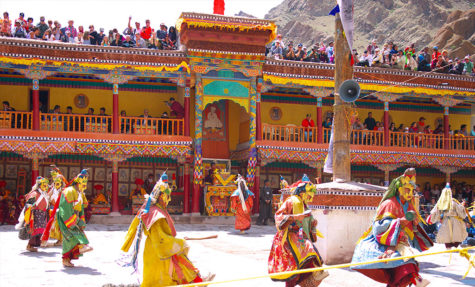
After a tough winter the chills have become bearable, the Hemis monastery opens its doors to enjoy festivities. The date every year changes as it is celebrated every year on the tenth day of the Lunar calendar of the Tibetan month. The dates for this festival vary from year to year. in 2017 it falls on July 3 and 4.
The festival highlight is the Dance performances and plays by masked Lamas. The masked dance represents the good prevailing over evil. The participants of the spellbinding performance are dressed in vibrant costumes and bright masks. Every mask has its own place in Tibetan and Buddhist legends. Signifying aspects of good and evil, they are designed as humble, divine faces, animals, skeletons and numerous frightful figurines. Dancers can be seen with slow dance movements and fanciful expressions.
The masked dance performance is created on music medley of sounds of drums, trumpets and cymbals. The famous Padmasambhava dance, the highlight of the dance shows the victory of the ruta demons. The dances are spellbinding as the divine is represented and its said to be purifying your soul.
Here are some video clips:
Origins
Based on Tibetan and Buddhist Legends, Hemis Festival is said to have its origins back in 8th Century. Lord Padmasambhava also known as Guru Rimpoche is believed to be the local savior who banished demons and evil spirits. The spiritual leader is said to have introduced of Tantric Buddhism in the Himalayan Kingdom. Combining the teachings of Buddhism and Tibetan culture, a new way was established where life was entwined with prayers, austere life and a higher calling.The birth of Guru Rimpoche also known as Lord Padmasambhava is the occasion which is celebrated during Hemis Festival. The spiritual leader is conferred as the local savior.
Celebrations
The mask dance performance is the main attraction of the Hemis Festival
Ever seen Lamas dance? Well here they do, in their tell tale burgundy and mustard yellow attires. The old and the young gather to partake and witness this performance, the re-telling of their ancient mythological stories and folklore. The real spectacle is provided by the masked performers wearing horns, multicolored ribbons and brocade clothes that shine in the bright July sun. And believe me, some of those masks are more expressive than us.
The Chams are a part of the Tantric tradition performed to a cacophony of indigenous musical instruments. The music starts on a slow note and quickly picks up pace as the narrative becomes intense. It keeps building up to a hair raising climax when the leader of the Black Hat dance strikes down the devils idols (made of dough) in combat victory. The message is one that been around for eternity, that good prevails over evil. Its execution through the masked dance performance is what takes your breath away.
Every 12th year known as the Tibetan Year of the Monkey, Hemis Monastery Festival takes an auspicious turn.The unfurling of the largest Thangkha (12 metres) from the second floor of the monastery for the world to see happened in 2016, and won’t happen again for another 12 years. The scripture is worth seeing as it’s so delicately preserved.
Inside the monastery and outside during the festival check out the stalls. From delightful tastes of the mountain Kingdom to unique handicrafts of the region the sight are wonderful. Residents of remote villages, adventure seekers, photographers and travelers make their way here to be a part of the festival.
Other Ways To Celebrate:
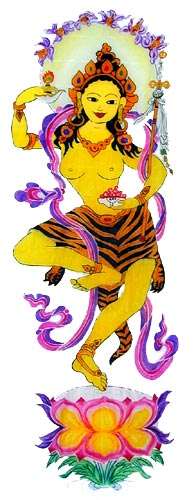 I have been enjoying the book, 365 Goddess. In this book, the author explores a different goddess every day in the context of rituals, feast days, holidays, festivals, and celebrations from around the world. Today is the celebration is the Hemis festival.
I have been enjoying the book, 365 Goddess. In this book, the author explores a different goddess every day in the context of rituals, feast days, holidays, festivals, and celebrations from around the world. Today is the celebration is the Hemis festival.
This festival includes a ritual play in which all manner of mythic creatures are poised against the Tibetan lamas, symbolizing the battle between good and evil. bells, censers, cymbals, and drums draw in positive magic, banish evil, and win the fight for goodness.
The goddesses assigned for this day are the Ratna Dakinis. In Tibet, these goddesses rule over all gestures of goodness and compassion, which naturally help improve karma. Collectively, their names mean “inestimable,” showing us the true power and value in acts of kindness that are driven by a pure heart.
The book also includes ideas for simple magical rituals and/or easy spells that are in keeping with the theme for the day. And so we find that for the Hemis festival the themes are the: banishing; victory; kindness; karma, and the color yellow.
For today, the suggestions are to wear something yellow, and also try to keep the Ratna Dakinis in mind so that your actions will be gentle and filled with kindness. You could also, using yellow ribbons, string together a collection of small bells for a Ratna Dakinis house amulet. Hold these in your hand and empower them by saying:
Let your goodness ring, let purity sing,
with each wind Ratna Dakinis’ blessing bring!
Hang these where they will catch the wind regularly, releasing the magic.
Other ideas include the following:
Do something nice for someone who’s been feeling blue lately, “just because”. Give them some yellow flowers, offer a hug, or maybe make an extra bell amulet for them too! This boosts good karma, makes both of you feel good, and invokes Ratna Dakinis’ blessings through thoughtfulness.
Note: This post was put together by Shirley Twofeathers, you may repost and share it only if you give me credit and a link back to this website. Blessed be.
This is the holiest day of all Buddhist days marking the birth, enlightenment and nirvana of the Lord Buddha. It is celebrated on many different dates, and in many different ways all over the world.
In many east Asian countries Buddha’s Birth is celebrated on the 8th day of the 4th month in the Chinese lunar calendar (in Japan since 1873 on April 8 of the Gregorian calendar), and the day is an official holiday in Hong Kong, Macau, and South Korea. The date falls from the end of April to the end of May in the Gregorian calendar.
In Nepal:
In Nepal, Buddha’s birthday is celebrated on the full moon day of May. In 2017, the holiday occurs on May 10. The festival is known by various names, Buddha Jayanti, Buddha Purnima, Vaishakh Purnima and Vesak. Purnima means full moon day in Sanskrit. Among the Newars of Nepal, the festival is known as Swanya Punhi, the full moon day of flowers. The day marks not just the birth of Shakyamuni Gautam Buddha but also the day of his Enlightenment and Mahaparinirvana. But as a gentle effect of the West, the event of the birth is given paramount importance.
The event is celebrated by gentle and serene fervor, keeping in mind the very nature of Buddhism. People, especially women, go to common Viharas to observe a rather longer-than-usual, full-length Buddhist sutra, as something like a service. The usual dress is pure white. Kheer, a sweet rice porridge is commonly served to recall the story of Sujata, a maiden who, in Gautama Buddha’s life, offered the Buddha a bowl of milk porridge after he had given up the path of asceticism following six years of extreme austerity. This event was one major link in his enlightenment.
It is said that the Buddha originally followed the way of asceticism to attain enlightenment sooner, as was thought by many at that time. He sat for a prolonged time with inadequate food and water, which caused his body to shrivel so as to be indistinguishable from the bark of the tree that he was sitting under. Seeing the weak Siddhartha Gautama, a girl named Sujata placed a bowl of milk in front of him as an offering. Realising that without food one can do nothing, the Buddha refrained from harming his own body.
In India:
The birth of Buddha or Tathagata is celebrated in India, especially in Sikkim, Ladakh, Arunachal Pradesh, Bodh Gaya, various parts of North Bengal such as Kalimpong, Darjeeling, and Kurseong, and Maharashtra (where 6% of total population are Buddhists) and other parts of India as per Indian calendar. The day is celebrated much the same way as in Nepal.
In Thailand:
Visakha Puja, the year’s greatest religious holiday, which commemorates the Buddha’s birth, enlightenment and death, comes during seeding and plowing. This is the holiest day of all Buddhist days marking the birth, enlightenment and nirvana of the Lord Buddha.
Buddhists will make merits and attend sermons at the temples (Wat). In the evening, Buddhist monks lead the laity in a magnificent candle-light triple circumambulation of Buddhist chapels throughout the country.Village elders attend temple celebrations and sermons during the day.
Those who have been working all day in the fields return at dusk to join the lovely candle or torchlit procession that circumambulates the temple chapel three times. Enacted in every village, town and city Wat (temple), each person carries flowers, three glowing incense sticks and a lighted candle in silent homage to the Buddha, his teaching and his disciples.
In Japan:
In Japan, Buddha’s birth is also celebrated according to the Buddhist calendar but is not a national holiday. On this day, all temples hold Kanbutsu-e or Hana-matsuri, meaning ‘Flower Festival’. The first event was held at Asuka-dera in 606.
Japanese people pour ama-cha (a beverage prepared from a variety of hydrangea) on small Buddha statues decorated with flowers, as if bathing a newborn baby.
In Korea:
Lotus Lantern Festival celebrating Buddha’s Birthday, is celebrated in South Korea according to the Lunisolar calendar. This day is called Seokga tansinil, meaning “Buddha’s birthday” or Bucheonim osin nal meaning “the day when the Buddha came.”.
Lotus lanterns cover the entire temple throughout the month which are often flooded down the street. On the day of Buddha’s birth, many temples provide free meals and tea to all visitors. The breakfast and lunch provided are often sanchae bibimbap.
In Sri Lanka:
This is one of the major festivals in Sri Lanka. It is celebrated on the first full moon day of the month of May. People engage in religious observances and decorate houses and streets with candles and specially made paper lanterns. some stores give out free meals for people.
In specific places, there are buildings made out of light bulbs but from a distance it represents pictures from the Buddha’s life. They are called vesak thorun (Pandals). People sing songs called “bhakthi geetha”.
United States:
Among the many practicing Buddhists in the United States, Buddha’s Birthday (Hana-Matsuri) is widely celebrated on April 8 of the standard Gregorian calendar.
In 1968 on April 8 in the California Bay Area, the first circumambulation of Mt. Tamalpais to celebrate Buddha’s Birthday was conducted. The director of the Esalen at Stanford program designed a leaflet and had it distributed to all universities in the Bay Area. Some brought sleeping bags and slept overnight in Muir Woods to enable an early start up the Dipsea Trail.
For the several hundred people involved, it was an unforgettable day clear, sunny, calm, and somewhat warm. Gary Snyder, Allen Ginsberg, and Philip Whalen were there. Taught by Gary and Allen, we chanted a different mantra at every station of the clockwise circumambulation. We all stopped for lunch on a sunny hillside. Allen brought miso for lunch, and he passed it around for others to enjoy.
Starting in 1969 on April 8 (and into the 1970s) at Tassajara Zen Mountain Center, Hana-Matsuri was celebrated each spring. Dressed in formal black robes, the roughly 70 monks and students formed a formal procession to the Horse Pasture with the leader periodically ringing a small, clear bell.
A temporary stone altar was built under a huge oak tree in a gorgeous field of green grass and abundant wildflowers; a small statue of a baby Buddha was placed upon it in a metal basin. Then each person would in turn approach the altar, ladle one thin-lipped bamboo dipperful of sweet green tea over the statue, bow, and walk to one side. How haunting and mysterious – the juxtaposition of formality, ritual and wild Nature.
Other countries:
Some places have a public holiday one week later, on the fifteenth day of the fourth month in the Chinese Lunar Calendar, to coincide with the full moon. The names for this festival vary with each country, for instance Visakha Puja in Thailand or Lễ Phật đản in Vietnam. In some countries it is a public holiday, in others it is not.
The enlightenment of the Buddha is yearly celebrated in many Buddhist countries, on a variety of dates, and is known by different names in different countries. For example:
- Rohatsu (Japan) December 8
- Laba (China) 8th day of the 12th lunar month, or at some point between Winter Solstice and the Chinese New Year
Bodhi Day commemorates the day that the historical Buddha, Siddhartha Gautama (Shakyamuni), experienced enlightenment, also known as bodhi in Sanskrit and Pali. According to tradition, Siddhartha had recently forsaken years of extreme ascetic practices and resolved to sit under a peepal tree and simply meditate until he found the root of suffering, and how to liberate oneself from it.
Services and traditions vary among Buddhist sects, but all such services commemorate the Buddha’s achievement of Nirvana, and what this means for Buddhism today. Individuals may choose to commemorate the event through additional meditation, study of the Dharma, chanting of Buddhist texts (sutras), or performing kind acts towards other beings. Some Buddhists celebrate with a traditional meal of tea, cake, and readings.
Celebrating Bodhi Day
Bodhi Day, the day of enlightenment, can be celebrated in many ways. To the Buddhist, it is a day of remembrance and meditation, much like the Christian celebration of the birth of Jesus on December 25th.
To the layman, a good way of recognizing this important event in Buddhism is to dwell on its meaning and place reminders in the home of this event. Often, colored lights are strung about the home to recognize the day of enlightenment. They are multi-colored to symbolize the many pathways to enlightenment. The lights are turned on each evening beginning on December 8th and for 30 days thereafter. A candle is also lit for these thirty days to symbolize enlightenment.
In Buddhist homes, you will sometimes see a ficus tree of the genus ficus religiousa. Beginning on Bodhi Day, these trees are decorated with multi-colored lights, strung with beads to symbolize the way all things are united, and hung with three shiny ornaments to represent the Three Jewels – The Buddha, the Dharma, and the Sangha.
A meal of rice and milk is significant on this holiday. According to Buddhist legend, following his awakening this was the first meal offered to the Buddha by Sujata to help him regain strength.
To get children involved in this holiday, make cookies in the shape of a leaf or a tree to symbolize the Bodhi Tree. The leaves of the Bodhi tree are heart shaped, so a Valentine’s Day cookie cutter can be a handy tool for this project.
About the Great Awakening:
Traditions vary on what happened. Some say Siddhartha made a great vow to Nirvana and Earth to find the root of suffering, or die trying. In other traditions, while meditating he was harassed and tempted by the god Mara (literally, “Destroyer” in Sanskrit), demon of illusion. Other traditions simply state that he entered deeper and deeper states of meditation, confronting the nature of the self.
In the Pali Canon, there are several discourses said to be by Buddha himself, relating to this story. In The Longer Discourse to Saccaka, the Buddha describes his Enlightenment in three stages:
- During the first watch of the night, the Buddha discovered all of his past lives in the cycle of rebirth, realizing that he had been born and reborn countless times before.
- During the second watch, the Buddha discovered the Law of Karma, and the importance of living by the Eightfold Path.
- During the third watch, the Buddha discovered the Four Noble Truths, finally reaching Nirvana.
In his words:
“ My heart, thus knowing, thus seeing, was released from the fermentation of sensuality, released from the fermentation of becoming, released from the fermentation of ignorance. With release, there was the knowledge, ‘Released.’ I discerned that ‘Birth is ended, the holy life fulfilled, the task done. There is nothing further for this world.’ ”
All traditions agree that as the morning star rose in the sky in the early morning, the third watch of the night, Siddhartha finally found the answers he sought and became Enlightened, and experienced Nirvana. Having done so, Siddhartha now became a Buddha or “Awakened One”.
Sources: Wikipedia and Do It Yourself

